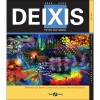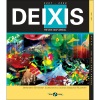A fourth-year fellow probes cloud droplets to boost climate predictions.

Genomic field work
A UC Davis fellow combines computing, the corn genome and growing data to help farmers forecast biofortified crop production.

Tracking space debris
A Computational Science Graduate Fellowship recipient monitors threats to satellites in Earth’s ionosphere by modeling plasma waves.






















